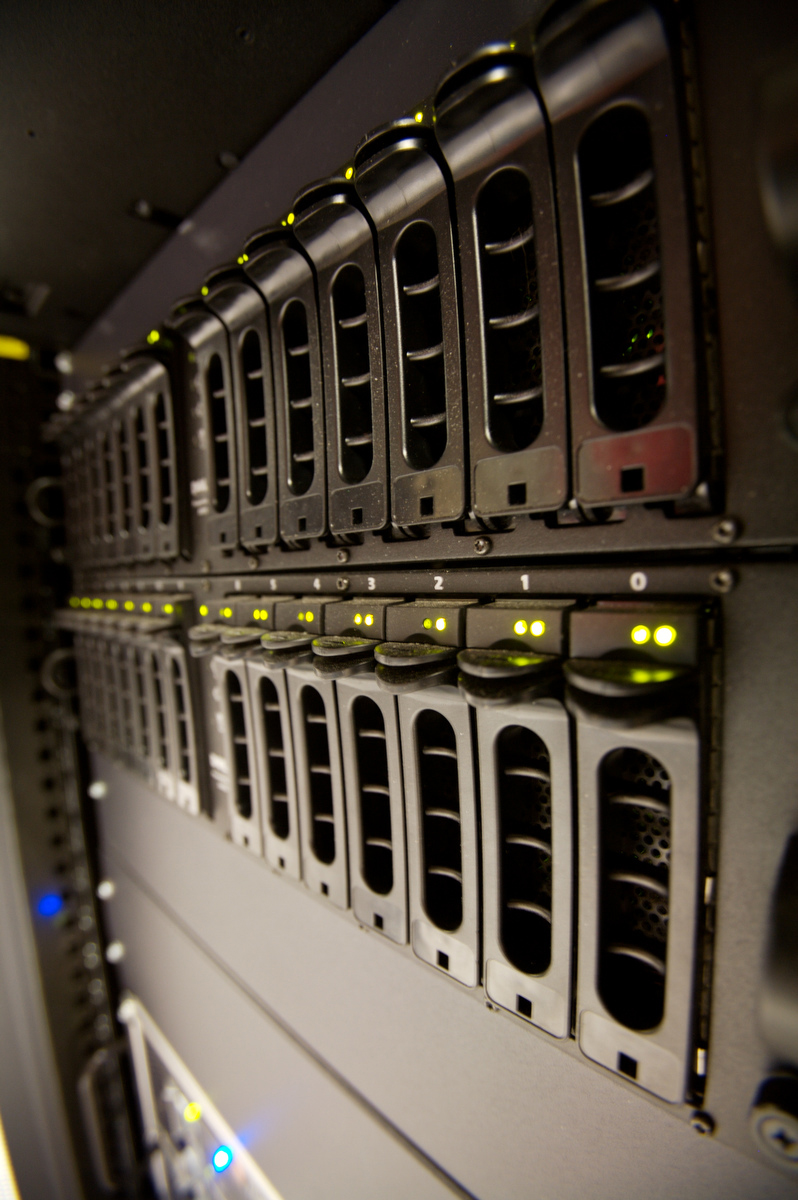RedHawk3 takes off at Miami

by Elizabeth Jenike, IT Services
High-performance computing (HPC) at Miami University is getting ready to fly forward, thanks to the collaborative efforts of IT Services and the Office for the Advancement of Research and Scholarship (OARS).
Since 2006, HPC at Miami has been supported by a compute cluster affectionately named ‘RedHawk.’ When it was commissioned, it was the state’s largest supercomputer system outside the Ohio Supercomputer Center at The Ohio State University, and it put Miami among the top universities in the U.S. in research computing resources. In the 12 years since the system’s inception, the Redhawk cluster has supported more than 200 projects, and over 3,000 students have used it in some capacity.
 Research projects supported by the Redhawk cluster vary from molecular architectures to the effect of fiscal policy on the economy—which are simply examples of important projects that have an impact outside the University.
Research projects supported by the Redhawk cluster vary from molecular architectures to the effect of fiscal policy on the economy—which are simply examples of important projects that have an impact outside the University.
This year, HPC at Miami is becoming even stronger. A partnership between IT Services and OARS paved the way for RedHawk3, a cluster with 32 high-powered compute nodes and even greater speed that will be supported on a rolling basis as Miami’s HPC strategy evolves.
Stronger together
A new HPC advisory committee, led by Dr. Jim Oris, associate provost for research and dean of the graduate school, has been formed with representatives from key academic areas. The committee has developed and is implementing a three-tiered HPC strategy. The Council of Academic Deans approved five years of funding, and the HPC advisory committee has led the implementation in conjunction with OARS and IT Services. Thanks to the partnership between OARS, IT Services, and representatives from academic divisions, the dream of a fully realized HPC strategy is becoming reality.
Where there’s a strategy, there’s a way
The newly re-envisioned HPC strategy at Miami has three branches that support getting more computing power to faculty, staff, and students in the most effective way possible. At the end of the enhancement project, there will be three clear ways for folks to take advantage of high-powered resources:
- RedHawk3—Miami’s own high-performance cluster, managed by teams from OARS and IT Services, came online at noon on October 11, 2018.
- Ohio Supercomputing Center—Based in Columbus at OSU, these clusters allow for Ohio researchers to take advantage of very high-scale computational resources at low or no cost, leveraging the large state investment that Ohio has made available to higher education institutions.
- Cloud-based compute resources (Amazon Web Services)—Cloud computing infrastructure will also be available to HPC users for specialized needs, including temporary highly flexible needs.
The RedHawk3 cluster’s patching cycle will be handled automatically on recurring schedules. This will free up resources and allow cluster account management teams to focus their efforts on strategic goals.
The hardware of the improved RedHawk3 HPC cluster has been upgraded, as well. The new machines have state-of-the art Intel processors that work at a clock speed of 2.6 GHz, and each has 24 compute cores and about 100 GB of shared memory. This means that the system is able to support faster computations and bigger, more complex computations can be performed. It well exceeds the older system in terms of capacity and speed—i.e., room for more projects (which can be completed with much shorter timelines) and more research opportunities!
Research made possible
The HPC cluster at Miami has been instrumental in more than 200 research projects since its inception in 2006—but what does that look like?
One of the researchers using RedHawk3 is Scott Hartley, a professor in the department of chemistry and biochemistry, who is taking advantage of the advanced computing power of the HPC cluster to perform computational chemistry calculations to predict molecular movements. His research focuses on understanding ever more complex molecular architectures, and as he and his team understand more, they have greater need for computational power.
More examples of the amazing things being done thanks to Redhawk 3.0 can be found on the OARS blog. For more information about RedHawk3 and HPC at Miami, contact Research Computing Support at rescomp@MiamiOH.edu.

